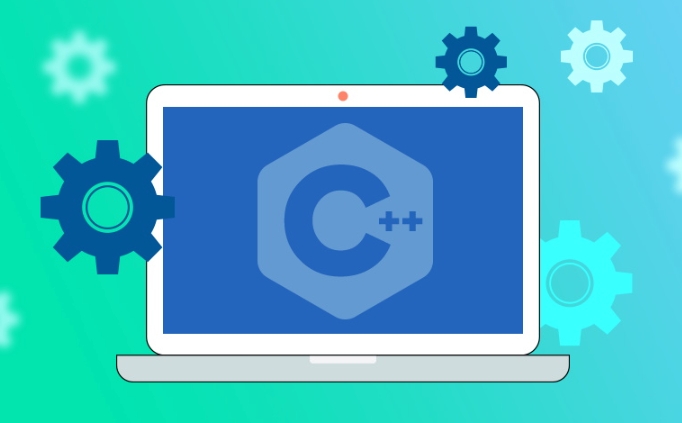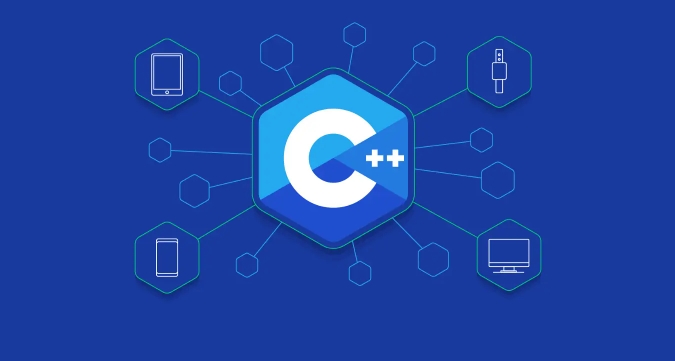Learning C to perform scientific computing is an effective way to improve performance, especially for those who already have a foundation in Python or MATLAB. At the beginning, you should install the g or clang compiler and write code with the basic structure, including main functions and functional functions, to separate the computational logic such as the main loop from mathematical formulas. It is recommended to use libraries such as Eigen, Boost and GSL to simplify matrix operations and mathematical processing, and add -O3 optimization options at compile time to improve efficiency. In terms of performance optimization, frequent memory allocation, use references to pass large objects, rational use of const and inline, and multi-thread acceleration can be achieved with OpenMP or std::thread. In addition, attention should be paid to the floating point accuracy issue and try to compare the double value directly through the error range rather than directly comparing the double value. Starting with simple projects such as ODE solvers or FFT transformations, step-by-step practice is the key to mastering scientific computing in C.

Learning C to do scientific calculations is actually quite common. It is fast and has fine control, and is suitable for handling large amounts of numerical operations or complex model simulations. If you have a little basic programming, such as using Python or MATLAB, and want to switch to C to improve performance, this article can help you get started quickly.

How to start writing a scientific computing program
Scientific computing programs usually include steps such as reading data, performing calculations, and outputting results. You can start with the simplest examples, such as solving an equation or implementing an integral method.

- Install the compiler first, such as g or clang
- Write code with basic structure: several main function functions
- Split the calculation logic clearly, such as writing the main loop and mathematical formula separately
For example, if you want to calculate an integral, you can use the trapezoidal method, first define a function double f(double x) and then write the integral part. This will also be convenient for you to change the formula in the future.
Common library recommendations and usage tips
Although the C standard library is powerful, it still depends on several classic third-party libraries in scientific computing:

- Eigen : Matrix operation artifact, simple installation and interface friendly
- Boost : contains many mathematical functions and tools, such as random numbers and special functions.
- GSL (GNU Scientific Library) : an old scientific computing library with complete functions but a little older
Matrix multiplication is very intuitive, for example:
#include <Eigen/Dense>
Eigen::MatrixXd m(2,2);
m << 1, 2,
3, 4; These libraries can save you a lot of time without having to build your own wheels. Remember to add some optimization options when compiling, such as -O3 , to make the program run faster.
Small details about performance optimization
Scientific calculations require high efficiency, so you need to pay more attention to when writing:
- Try to avoid frequent memory allocation, such as new/delete objects in loops
- Pass large objects with references and reduce copies
- Use const and inline rationally to help compiler optimization
- If you are multithreaded, you can consider OpenMP or std::thread
For example, if you are doing a large iterative calculation and generate an array each time, it is best to allocate the space in advance instead of repeating new. There is also the floating point accuracy issue. Don’t easily judge whether the two doubles are equal, and try to use the error range to compare.
Basically that's it. C You may feel that there are many syntaxes and errors are prone to errors at the beginning, but once you get familiar with them, you will find that its flexibility and performance advantages in scientific computing are indeed irreplaceable. Take your time and start with a small project, such as making an ODE solver or FFT transformation, and checking information while doing it, and the progress will be faster.
The above is the detailed content of C tutorial for scientific computing. For more information, please follow other related articles on the PHP Chinese website!

Hot AI Tools

Undress AI Tool
Undress images for free

Undresser.AI Undress
AI-powered app for creating realistic nude photos

AI Clothes Remover
Online AI tool for removing clothes from photos.

Clothoff.io
AI clothes remover

Video Face Swap
Swap faces in any video effortlessly with our completely free AI face swap tool!

Hot Article

Hot Tools

Notepad++7.3.1
Easy-to-use and free code editor

SublimeText3 Chinese version
Chinese version, very easy to use

Zend Studio 13.0.1
Powerful PHP integrated development environment

Dreamweaver CS6
Visual web development tools

SublimeText3 Mac version
God-level code editing software (SublimeText3)

Hot Topics
 C Polymorphism : is function overloading a kind of polymorphism?
Jun 20, 2025 am 12:05 AM
C Polymorphism : is function overloading a kind of polymorphism?
Jun 20, 2025 am 12:05 AM
Yes, function overloading is a polymorphic form in C, specifically compile-time polymorphism. 1. Function overload allows multiple functions with the same name but different parameter lists. 2. The compiler decides which function to call at compile time based on the provided parameters. 3. Unlike runtime polymorphism, function overloading has no extra overhead at runtime, and is simple to implement but less flexible.
 What Are the Different Kinds of Polymorphism in C ? Explained
Jun 20, 2025 am 12:08 AM
What Are the Different Kinds of Polymorphism in C ? Explained
Jun 20, 2025 am 12:08 AM
C has two main polymorphic types: compile-time polymorphism and run-time polymorphism. 1. Compilation-time polymorphism is implemented through function overloading and templates, providing high efficiency but may lead to code bloating. 2. Runtime polymorphism is implemented through virtual functions and inheritance, providing flexibility but performance overhead.
 C : Is Polymorphism really useful?
Jun 20, 2025 am 12:01 AM
C : Is Polymorphism really useful?
Jun 20, 2025 am 12:01 AM
Yes, polymorphisms in C are very useful. 1) It provides flexibility to allow easy addition of new types; 2) promotes code reuse and reduces duplication; 3) simplifies maintenance, making the code easier to expand and adapt to changes. Despite performance and memory management challenges, its advantages are particularly significant in complex systems.
 C Destructors: Common Errors
Jun 20, 2025 am 12:12 AM
C Destructors: Common Errors
Jun 20, 2025 am 12:12 AM
C destructorscanleadtoseveralcommonerrors.Toavoidthem:1)Preventdoubledeletionbysettingpointerstonullptrorusingsmartpointers.2)Handleexceptionsindestructorsbycatchingandloggingthem.3)Usevirtualdestructorsinbaseclassesforproperpolymorphicdestruction.4
 Polymorphism in C : A Comprehensive Guide with Examples
Jun 21, 2025 am 12:11 AM
Polymorphism in C : A Comprehensive Guide with Examples
Jun 21, 2025 am 12:11 AM
Polymorphisms in C are divided into runtime polymorphisms and compile-time polymorphisms. 1. Runtime polymorphism is implemented through virtual functions, allowing the correct method to be called dynamically at runtime. 2. Compilation-time polymorphism is implemented through function overloading and templates, providing higher performance and flexibility.
 C tutorial for people who know Python
Jul 01, 2025 am 01:11 AM
C tutorial for people who know Python
Jul 01, 2025 am 01:11 AM
People who study Python transfer to C The most direct confusion is: Why can't you write like Python? Because C, although the syntax is more complex, provides underlying control capabilities and performance advantages. 1. In terms of syntax structure, C uses curly braces {} instead of indentation to organize code blocks, and variable types must be explicitly declared; 2. In terms of type system and memory management, C does not have an automatic garbage collection mechanism, and needs to manually manage memory and pay attention to releasing resources. RAII technology can assist resource management; 3. In functions and class definitions, C needs to explicitly access modifiers, constructors and destructors, and supports advanced functions such as operator overloading; 4. In terms of standard libraries, STL provides powerful containers and algorithms, but needs to adapt to generic programming ideas; 5
 What Are the Various Forms of Polymorphism in C ?
Jun 20, 2025 am 12:21 AM
What Are the Various Forms of Polymorphism in C ?
Jun 20, 2025 am 12:21 AM
C polymorphismincludescompile-time,runtime,andtemplatepolymorphism.1)Compile-timepolymorphismusesfunctionandoperatoroverloadingforefficiency.2)Runtimepolymorphismemploysvirtualfunctionsforflexibility.3)Templatepolymorphismenablesgenericprogrammingfo
 C Polymorphism: Coding Style
Jun 19, 2025 am 12:25 AM
C Polymorphism: Coding Style
Jun 19, 2025 am 12:25 AM
C polymorphismisuniqueduetoitscombinationofcompile-timeandruntimepolymorphism,allowingforbothefficiencyandflexibility.Toharnessitspowerstylishly:1)Usesmartpointerslikestd::unique_ptrformemorymanagement,2)Ensurebaseclasseshavevirtualdestructors,3)Emp






